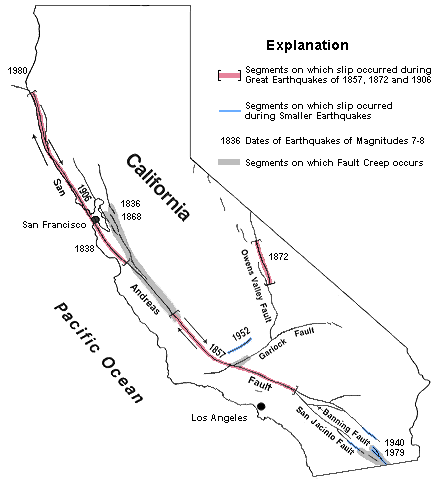Is the Next Big Earthquake Destined for Northern California?

On January 27, 1700, a six-hundred-mile-long wave struck the coast of Japan, devastating the coastline and killing thousands. At the time, Japanese officials were baffled by the event, considering that no earthquake had been felt in the region and the wave seemingly came out of nowhere.
As civilization has developed in North America and global communications have grown, the origin of that tsunami is now known.
The wave came from America’s Pacific Northwest, where a magnitude-9.0 earthquake struck the coastline, killing most of the Native American inhabitants near the epicenter and creating a tsunami that, according to legend, left canoes hanging on the top of trees.
That seismic activity was the latest movement of the Cascadia subduction zone, a fault line that runs from Cape Mendocino in Northern California and continues up along the coast to Vancouver Island, Canada. If that earthquake happened today it would have devastated cities in the Pacific Northwest, including NorCal, and killed potentially tens of thousands of people.

Movement of the Cascadia subduction zone is long overdue, with 319 years between activity on a fault line that averages geological events every 243 years.
Meanwhile, the more popular fault line in Northern California is the San Andreas fault, which, despite a lot of online hearsay, did not contribute to the recent earthquakes in Souther California. But it was responsible for the massive earthquakes in San Francisco in 1989 and 1906, in which 67 and 3,000 people were killed.

Today, the Souther California segment of the San Andreas Fault remains the most vulnerable, with a long period of time between earthquakes increasing the tension along the fault.
“You realize the last big earthquake to hit the L.A. segment of the San Andreas fault was 1680,” physicist Michio Kaku said to CBS News. “That’s over 300 years ago. But the cycle time for breaks and earthquakes on the San Andreas fault is 130 years, so we are way overdue.”
But as we’ve performed extensive studies on the San Andreas Fault, much less is known about Cascadia. For example, the maximum magnitude of an earthquake on San Andreas is 8.2, but that number is not known for Cascadia. A magnitude-9.0 earthquake, which we know Cascadia is capable of, would be more than six times bigger that the largest San Andreas earthquake.
With tensions stressed tight on both of the dangerous fault lines surrounding Northern California, the question of the next big earthquake in the region is more when than if. Any earthquake along Cascadia would send a tsunami to NorCal coastal communities, like Crescent City’s 1964 tsunami that killed 12 people and caused $15 million in damage.
The Cascadia subduction zone is part of the Gorda Plate, which experiences frequent earthquake activity on both of its ends. On its northern end is the Mendocino Triple Junction, which frequently experiences magnitude-4 earthquakes, rumbling the little towns of Petrolia and Ferndale. This is also the meeting point of Cascadia and San Andreas, two fault lines destined to let off a big earthquake in the near future.
Japan, which shares the ‘Ring of Fire’ designation with the volcanos of NorCal, has a comprehensive warning system to alert citizens of earthquake or tsunami activity. The system shuts down railways and power plants, opens elevator and fire doors, and alerts hospitals to suspend surgery and prepare for the inevitable.
There is no such alert system in the United States, at least that comprehensive. So the fact of the matter remains – the BIG earthquake is coming. Are you prepared?
